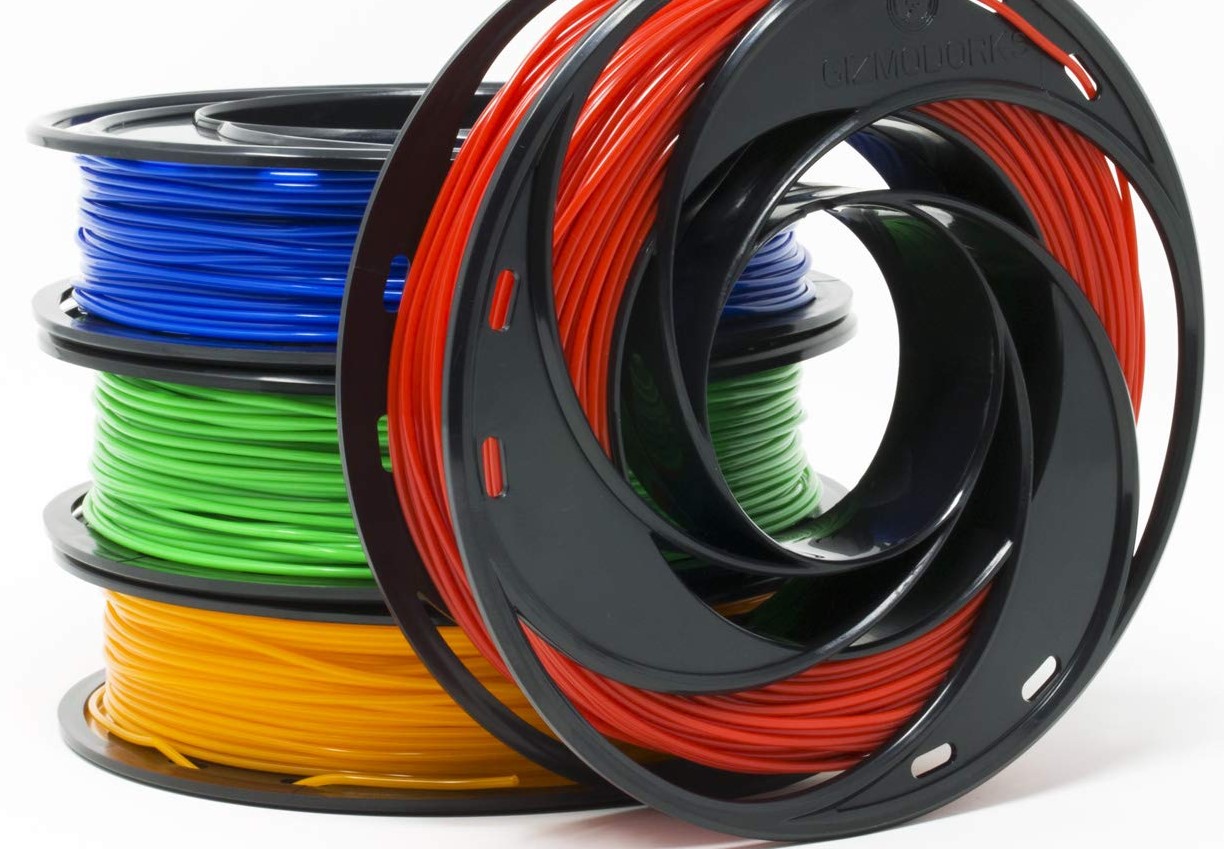Biodegradable 3D Printing Materials
Biodegradable 3D Printing Materials
We Build Custom Giant 3D Printed Biodegradable Props
Did you know we make
custom
3D biodegradable props?

Exploring the Boundless Horizons of Biodegradable 3D Printing Materials: A Comprehensive Guide to Sustainable Innovation
In the dynamic landscape of modern manufacturing, sustainability has emerged as a paramount concern. As industries seek to mitigate their environmental impact, the realm of 3D printing has witnessed a significant shift towards the utilization of biodegradable materials. This revolutionary approach combines cutting-edge technology with eco-conscious principles to pave the way for a greener future.
In this comprehensive guide, we delve deep into the realm of biodegradable 3D printing materials, exploring their characteristics, applications, advantages, and the pivotal role they play in shaping sustainable innovation.

Understanding Biodegradable 3D Printing Materials
Defining Biodegradable Materials in 3D Printing
- Biodegradable materials refer to substances that can decompose naturally in the environment, usually through microbial action, into harmless compounds such as water, carbon dioxide, and biomass. In the context of 3D printing, these materials offer a sustainable alternative to traditional plastics, which often contribute to pollution and environmental degradation.
Types of Biodegradable 3D Printing Materials:
– Polylactic Acid (PLA)
- PLA stands out as one of the most popular biodegradable polymers used in 3D printing. Derived from renewable resources such as corn starch or sugarcane, PLA exhibits excellent printability, low toxicity, and biodegradability.
- Applications: PLA finds widespread use in prototyping, consumer goods, packaging, and biomedical applications due to its biocompatibility.
- Advantages: Biodegradability, renewable sourcing, minimal environmental impact, and compatibility with a wide range of 3D printers.
B. Polyhydroxyalkanoates (PHA)
- PHA represents a family of biodegradable polymers synthesized by microorganisms under specific conditions. These polymers boast diverse properties, ranging from rigid to flexible, making them suitable for various applications.
- Applications: PHA-based materials are utilized in packaging, medical implants, tissue engineering, and compostable products.
- Advantages: Biodegradability, versatility, and potential for customizability based on microbial synthesis conditions.
C. Polycaprolactone (PCL)
- PCL is a biodegradable polyester that exhibits a low melting point, making it ideal for applications requiring post-processing or compatibility with other materials. It possesses good mechanical properties and biodegradability, albeit at a slower rate compared to PLA or PHA.
- Applications: PCL finds application in orthopedic implants, drug delivery systems, prosthetics, and flexible packaging.
- Advantages: Low melting point, biodegradability, and compatibility with various 3D printing technologies.
Emerging Biodegradable Materials
- Beyond PLA, PHA, and PCL, researchers are actively exploring novel biodegradable materials derived from algae, cellulose, chitosan, and other biomass sources. These materials hold immense potential for addressing specific application requirements while further enhancing sustainability in 3D printing.
Advancements in Biodegradable 3D Printing Technologies
Fused Deposition Modeling (FDM)
- FDM remains one of the most widely adopted 3D printing technologies for biodegradable materials due to its simplicity, affordability, and versatility. PLA, in particular, is highly compatible with FDM printers, enabling the fabrication of intricate prototypes, consumer products, and packaging solutions.
Selective Laser Sintering (SLS)
- SLS technology utilizes a high-powered laser to sinter powdered biodegradable materials such as PLA or PCL layer by layer, forming intricate 3D objects. This approach offers excellent accuracy, resolution, and mechanical properties, making it suitable for functional prototypes, tooling, and end-use parts.
Stereolithography (SLA) and Digital Light Processing (DLP)
- SLA and DLP employ photopolymerization to solidify liquid resin materials layer by layer, resulting in high-resolution prints with smooth surface finishes. Biodegradable resins compatible with these technologies enable the production of detailed models, jewelry, dental appliances, and medical devices with exceptional precision.
Continuous Liquid Interface Production (CLIP)
- CLIP represents a revolutionary approach to resin-based 3D printing, utilizing a combination of light and oxygen to facilitate continuous printing of intricate structures at unprecedented speeds. Biodegradable resins suitable for CLIP technology offer enhanced mechanical properties, enabling the fabrication of durable parts for various applications.
Applications and Impact of Biodegradable 3D Printing Materials
Environmental Sustainability
- Biodegradable 3D printing materials contribute to environmental sustainability by reducing reliance on non-renewable resources, minimizing waste generation, and facilitating closed-loop recycling systems. These materials offer a viable solution to the plastic pollution crisis plaguing land and marine ecosystems worldwide.
Biomedical Engineering
- The biocompatibility and biodegradability of materials such as PLA, PHA, and PCL make them ideal candidates for biomedical applications. From tissue engineering scaffolds and drug delivery systems to personalized implants and prosthetics, biodegradable 3D printing materials are revolutionizing the field of healthcare by offering patient-specific solutions with minimal adverse effects.
Packaging and Consumer Goods
- The demand for sustainable packaging solutions has driven the adoption of biodegradable 3D printing materials in the packaging industry. From compostable food containers and biodegradable cutlery to eco-friendly product packaging, these materials offer a viable alternative to conventional plastics, reducing environmental impact and promoting circular economy principles.
Aerospace and Automotive
- The aerospace and automotive industries are increasingly incorporating biodegradable 3D printing materials into their manufacturing processes to reduce weight, enhance fuel efficiency, and minimize environmental footprint. Components such as interior trim panels, air ducts, and lightweight structural parts can be fabricated using biodegradable polymers, contributing to overall sustainability and performance.
Challenges and Future Directions
Material Properties and Performance
- While biodegradable 3D printing materials offer numerous advantages, challenges related to material properties, mechanical performance, and degradation kinetics remain. Addressing these challenges requires ongoing research and development efforts aimed at optimizing material formulations, processing parameters, and post-processing techniques to meet specific application requirements.
Recycling and Circular Economy
- Achieving a closed-loop recycling system for biodegradable 3D printing materials poses logistical and technical challenges due to the diverse nature of biopolymers and their degradation products. Developing efficient recycling methods, standardizing material labeling, and establishing infrastructure for collection, sorting, and processing are critical steps towards realizing a circular economy for biodegradable materials.
Regulatory Compliance and Certification
- The regulatory landscape governing biodegradable materials in 3D printing is evolving, with increasing emphasis on standards for biodegradability, compostability, and safety. Ensuring compliance with relevant regulations and obtaining certifications from regulatory bodies are essential for widespread adoption of biodegradable 3D printing materials across industries.
Integration of Sustainable Practices
- Beyond material innovation, the widespread adoption of biodegradable 3D printing materials requires a holistic approach that encompasses supply chain sustainability, energy efficiency, and ethical considerations. Collaboration among stakeholders, investment in green technologies, and public awareness campaigns are instrumental in driving the transition towards a more sustainable future.
Conclusion
In conclusion, biodegradable 3D printing materials represent a groundbreaking paradigm shift in manufacturing, offering a sustainable alternative to conventional plastics and contributing to environmental conservation, technological innovation, and societal well-being. By harnessing the power of biotechnology, additive manufacturing, and sustainable design principles, we can pave the way for a greener, more resilient future where economic prosperity coexists harmoniously with ecological integrity. Embracing the boundless potential of biodegradable materials in 3D printing is not merely a choice but a collective responsibility towards shaping a world where innovation thrives, resources are preserved, and generations to come inherit a planet worth cherishing.
Contact us today to learn more about our 3D services and how we can help you achieve your goals.